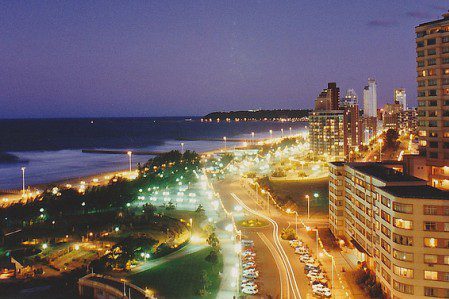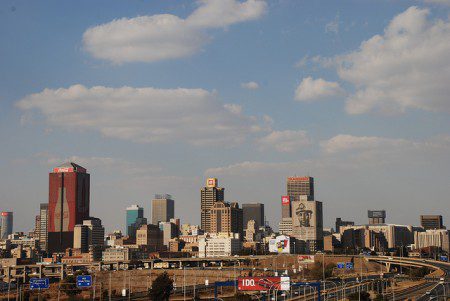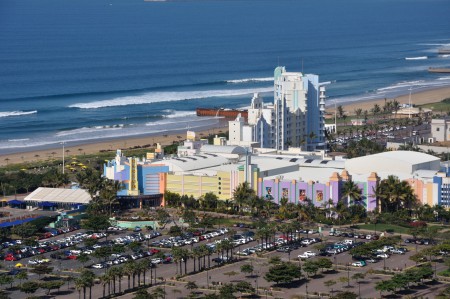The majority of people have appreciation and respect for South Africa and the decision by the and British and Dutch colonialists to settle in the country, an intriguing, vast sandy land. The first settlers appreciated the beauty, the radiance and bountiful crop the area could offer and invested in technology to harvest the earth, implementing irrigation and land-tilling skills. Communities were built; minerals were mined, the settlers created a structured delivery system for food and drive the economic strength. The future success of South Africa began in earnest
The firm and consistent leadership, the clear vision, and a precise plan on how to achieve a vision became a possibility driving the future to a successful country. Focusing on a workable concept the colonialist essentially built a new civilization for all the people of South Africa. Sharing imposed beliefs and traditions with the people in the land. There is no doubt the new settlers saw the advantage of using cheap labor and recognized a system to benefit the entire country.
The successful stories of migration and conquest of dominant countries or tribes around the world are similar to the early settlers story in South Africa. There was relatively no violence, and little blood drawn during the time the early settlers reach South Africa relative to other colonial conflicts or activities around the same time in world history.
There are similar stories of conquest and migration from dominant states and tribes across the world. In South Africa, the settlers appeared to have been less violent than other settlers with proportionally little or no blood drawn compared to other colonial activities or conflicts around that same time in world history.
Motivated by a need to find new natural resources, the Bantu have a remarkable story of migration throughout Africa. The indigenous inhabitants in Africa were influenced by the Bantu as the tribes moved in search of fertile land.
The Zulu history is permeated with domination and violence of other tribes. A history that is well understood and impressive in a visceral way. The Zulu tribe established roots in the old Natal land, and soon the tribe blazed a bloody path creating fear among neighboring tribes.
The KhoiSan had existed well before any other humans in Africa and inhabited the southern part of the continent. The KhoiSan lived harmoniously with nature and appears to have had the closest connection to the steady and ever-present "heartbeat" of Africa.
Shifting to current times, there are parallels with yesteryear. It appears today that people in positions of responsibility in the politically-and-racially-tainted-government-complex have lost the connection to the rhythmic heartbeat and soul of the country, and to that of the people. The government has forgotten why people are here.
There is a different breed of people that rule South Africa today, the name given to the ruling party is African National Congress (ANC). The ANC was recognized for being a party that liberated the black man from the shackles of Colonialist infused apartheid. Now the ANC are known for diverting resources away from the people into private Swiss bank accounts. A party that is avoiding the hard work that is necessary to build a country to meet the growing needs of a nation, not the character traits people see in real leaders. The ruler today is not recognized as a qualified leader.
The ANC rulers, appear to have the respect of the original inhabitants, the KhoiSan, Bantu and colonialists had for the land called Africa. The current leaders do not have a clear vision for how the lifeblood of South Africa, both inhabitants as well as the resources should be appropriately harnessed. In a way that honors the land and creates a safe harbor for the citizens, respecting the spirit of Africa and supporting the people.
The land is being abused and used inappropriately. It is the acutely aware of the lack of stewardship shown by the ANC and the weariness takes its toll. The selfish rulers of South Africa, known as the ANC, spend the resources recklessly and then in a power-hungry-induced-trance, sell the treasured land and human capital to the Chinese in backdoor deals. The ANC and cronies at an alarming rate are selling the resources. Mother Africa stirs. The corrupt rulers cheapen everything the Africans know. The ANC leaders have betrayed the same people for whom liberation was fought. Mother Africa awakens.
The beloved South Africa will soon bare its fangs and turn on its rulers by sending a clear message that violating a position of power and the privilege of ruling a sacred land. The Africans are the soul of the country, who feels the vibrant blood coursing through dusty veins. Those Africans are awakening, and will rise up soon.
The Africans represent all the right stewards of the land. The land must return and implement the values of respect given by the English, the Dutch, the Koi and the Bantu. To go back without bloodshed, for the ANC is but a house of cards that is about to fall, no killing will be needed.
Our Africa so desperately deserves this respect. The ancestors demand this respect and the consciousness of Africans need to be appreciated.
Now is the time, to replenish the water back into Africa, so that she may provide for the people abundantly later. The people must earn the respect by giving. The people can give by finding real leaders who will give and not take.
Opinion by Menzi Solomon Shange and Laura Oneale































